Are you in the market for a brand spanking new laptop? If so, you’ve come to the right place. We curated a list of the best laptops available today. From traditional clamshells to swanky 2-in-1’s, we’ve got something for everyone. If you’re working with an inflexible budget, don’t sweat it, we’ve included Chromebooks and a few other affordable options. Every single one of these laptops has been tested and personally vetted by the crew at PCWorld as well.
Read on for our picks for the best laptops around. If you’re looking to save some cash on your purchase, Amazon’s Prime Day (July 12 and 13) will be a great opportunity to find cheap notebooks, and we’ve already begun compiling some of the best Prime Day laptop deals. We’ve also got a roundup of the best laptop deals, updated every weekday. The top-tier stunners you’ll find below don’t grace it very often, but we relentlessly focus on good laptops that are actually good deals too.
Without further ado, these are the best laptops we’ve tested.
Lenovo ThinkPad X1 Carbon Gen 9 – Best productivity laptop
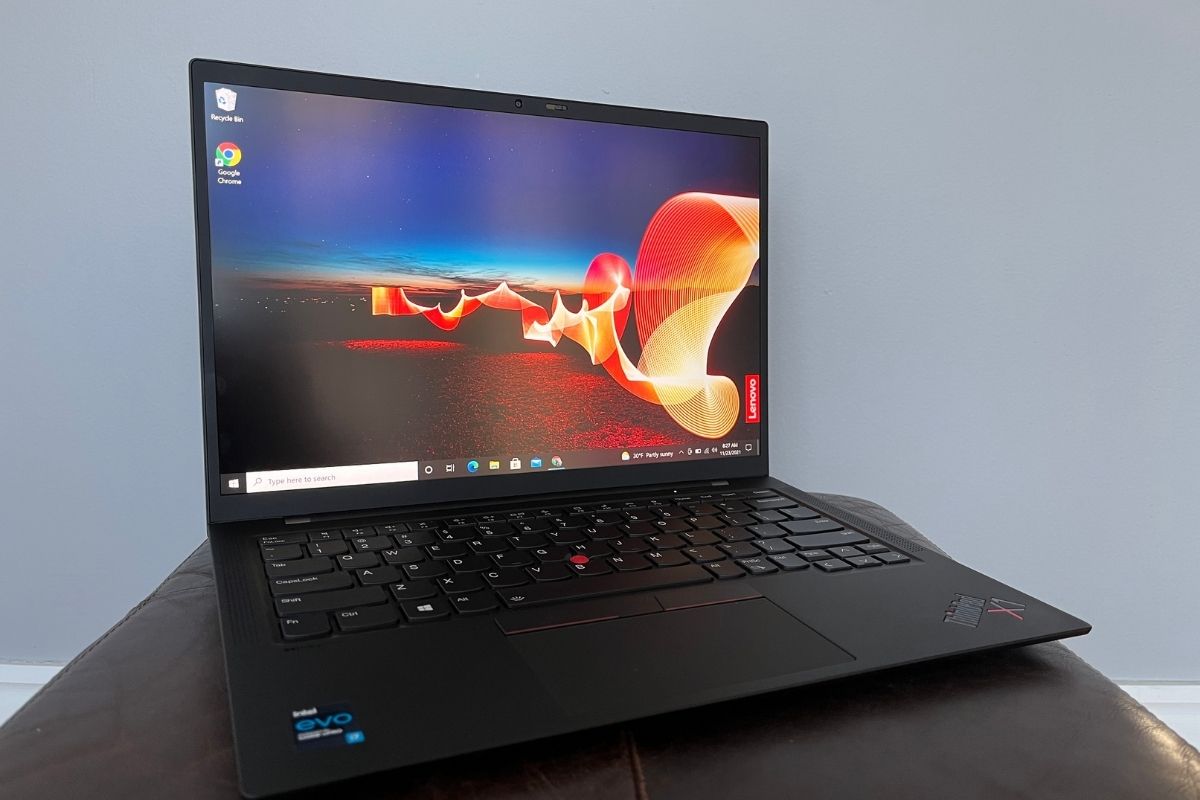
Pros
- Roomy 16:10 display
- Thin and light yet rugged
- Stellar keyboard
- Quiet operation
- Booming audio
- Two Thunderbolt 4 ports
Cons
- Webcam limited to 720p
- Display color is a bit cool
ThinkPads are generally hailed as being awesome business laptops because of their comfortable keyboards and silent operation. With its quiet keyboard, security features, and booming audio, the Lenovo ThinkPad X1 Carbon Gen 9 is one such laptop. It’s packing a quad-core Core i7-1185G7, 16GB of RAM, and integrated Iris Xe graphics. That means it’s well-equipped to handle “Office and other productivity apps” and “a variety of multitasking scenarios.” The real star of the show is the 16:10 display, though, as it gives you plenty of room to work with. If you consider yourself a business professional, you’ll definitely want to pick this one up.
Read our full
Lenovo ThinkPad X1 Carbon Gen 9 review
Razer Blade 17 (2022) – Best gaming laptop
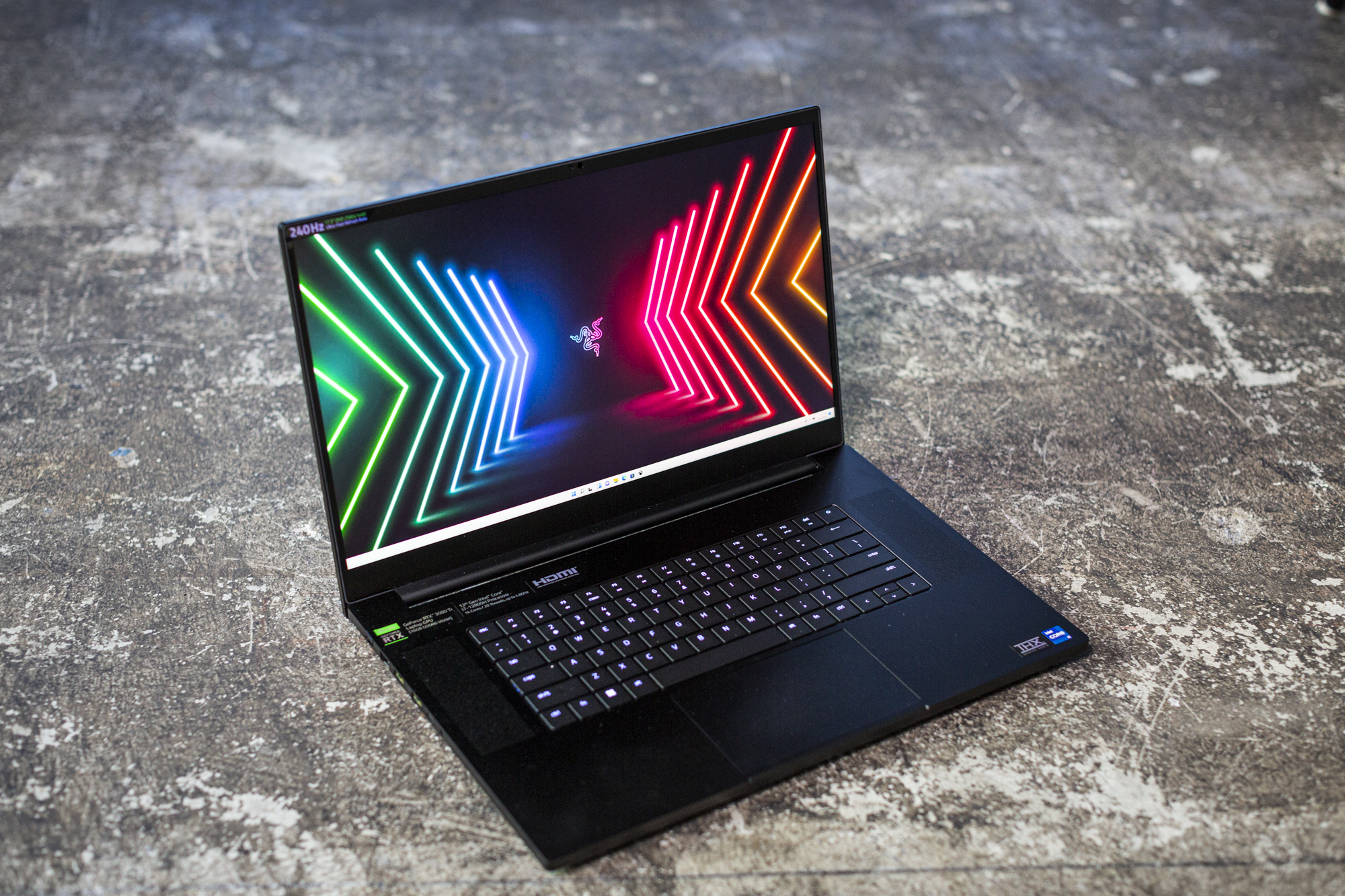
Pros
- Excellent gaming performance
- Great selection of ports including 2 x Thunderbolt 4
- Sturdy robust design
Cons
- Poor battery life unplugged
- Keyboard lacks a numpad
The Razer Blade 17 (2022) is a gamer’s ultimate dream. It’s a robust laptop with a stunning 240Hz display and a wide array of ports, including two Thunderbolt 4. Plus, you can expect awesome gaming performance thanks to the Intel 12-gen i7 CPU and GeForce RTX 3080 Ti GPU. That’s some serious power. However, you’re going to pay out the nose for it, as it costs thousands of dollars. If you’re willing to shell out the big bucks, then the Blade 17 is phenomenal option. If your budget is more limited, check out the ASUS VivoBook Pro 15 OLED below, which is our best budget gaming laptop pick.
Read our full
Razer Blade 17 (2022) review
ASUS VivoBook Pro 15 OLED Ultra Slim Laptop – Best budget gaming laptop
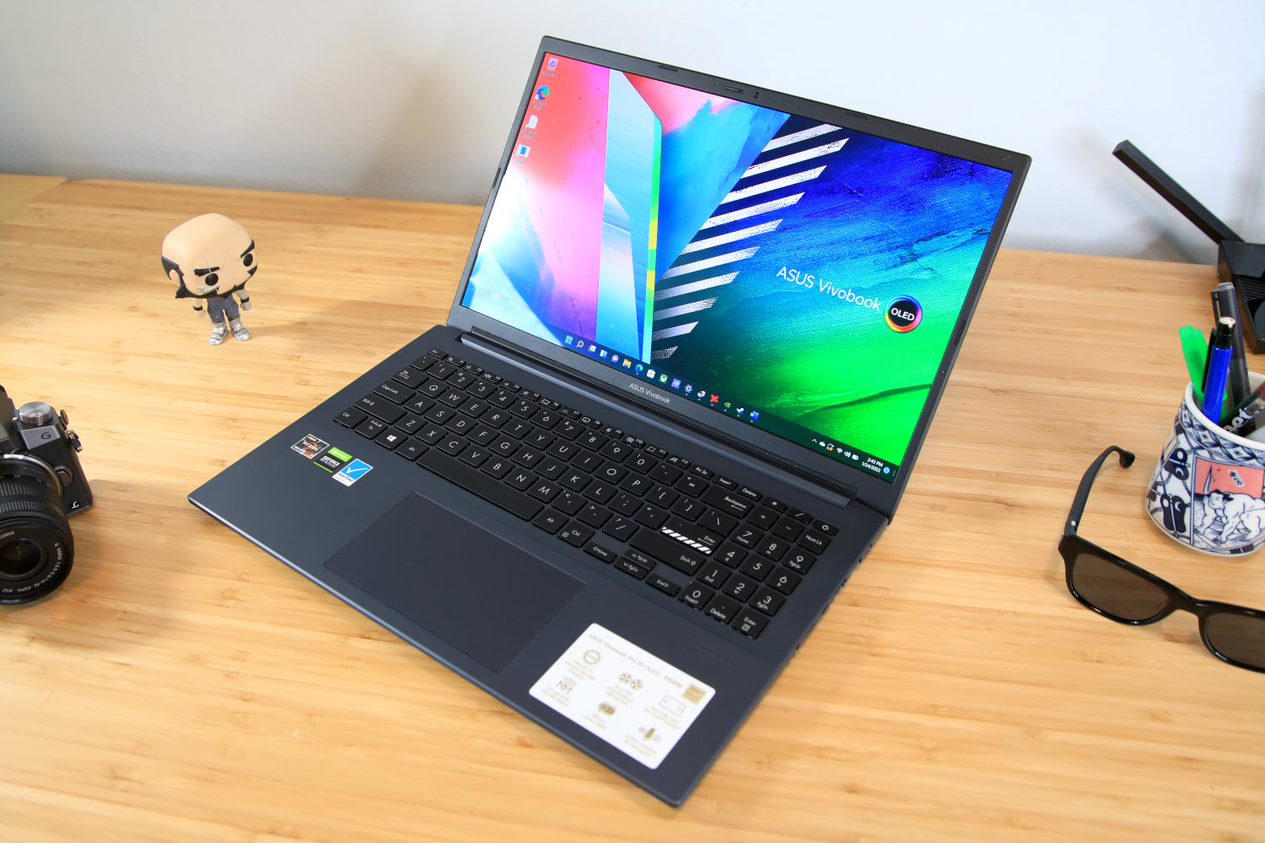
Pros
- Good productivity performance
- Superb display
- Rugged design
- Great battery life
Cons
- Boring aesthetics
- Unimpressive 720p webcam
- Unreliable fingerprint scanner
- Poor port selection
Looking for a reliable budget gaming laptop? The ASUS VivoBook Pro 15 OLED is a fantastic option. According to our tester, this laptop is great for “gaming, streaming, and day-to-day productivity.” Thanks to the AMD Ryzen 7 5800H CPU and the Nvidia GeForce RTX 3050 (4GB GDDR6) GPU, we were able to hit 60 frames-per-second at 1080p on high graphics during the Shadow of the Tomb Raider benchmark. Plus, the OLED display is absolutely beautiful and battery life is surprisingly good. There are a few minor shortcomings, however.
The overall design is a little plain and the port selection is limited, and you’ll need to drop down to Medium or High graphics in strenuous modern AAA games on the RTX 3050. Nitpicks aside, if you’re looking for reliable performance on a gorgeous OLED screen, the VivoBook Pro 15 is where the party’s at. If you don’t mind giving up those luscious OLED visuals for a bit more graphics firepower, you should take a look at the Acer Swift X, which is our next entry.
Read our full
ASUS VivoBook Pro 15 OLED Ultra Slim Laptop review
Swift X (SFX14-41G-R1S6) – Best affordable ultraportable
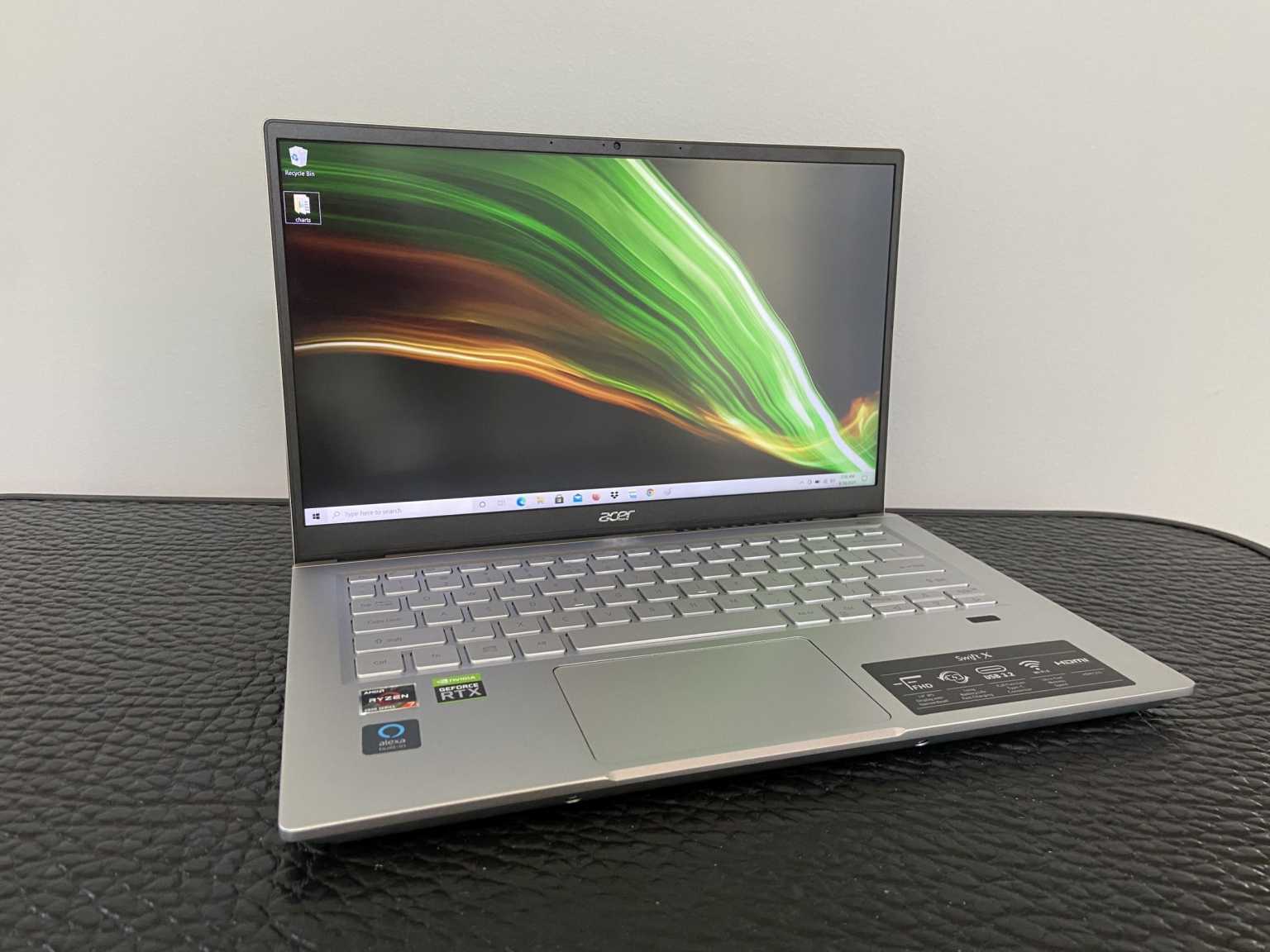
Pros
- Stellar ultraportable performance.
- Sneaky gaming laptop with RTX 3050 Ti graphics.
- Impressive battery life considering high-end parts.
Cons
- Display feels cramped for creative work.
- Fan gets loud during heavy workloads.
- Poorly placed Pg-Up and -Down buttons.
Don’t judge a laptop by its chassis. The Swift X may not look all that threatening at first glance, but under the hood you’ll find some seriously powerful components. This ultraportable is packing an AMD Ryzen 7 5800U processor, an Nvidia GeForce RTX 3050 Ti GPU, and 512GB of PCIe NVMe SSD storage. In our review, the Swift managed “48 frames per second at the Highest preset” when running Shadow of the Tomb Raider at 1080p. There are a few downsides, though. The fans get loud under heavy loads and the keyboard runs a little warm. But if you can live with those shortcomings and you’re looking for strong CPU and GPU performance, the Swift X will definitely deliver.
Read our full
Swift X (SFX14-41G-R1S6) review
Acer Aspire 5 – Best budget laptop
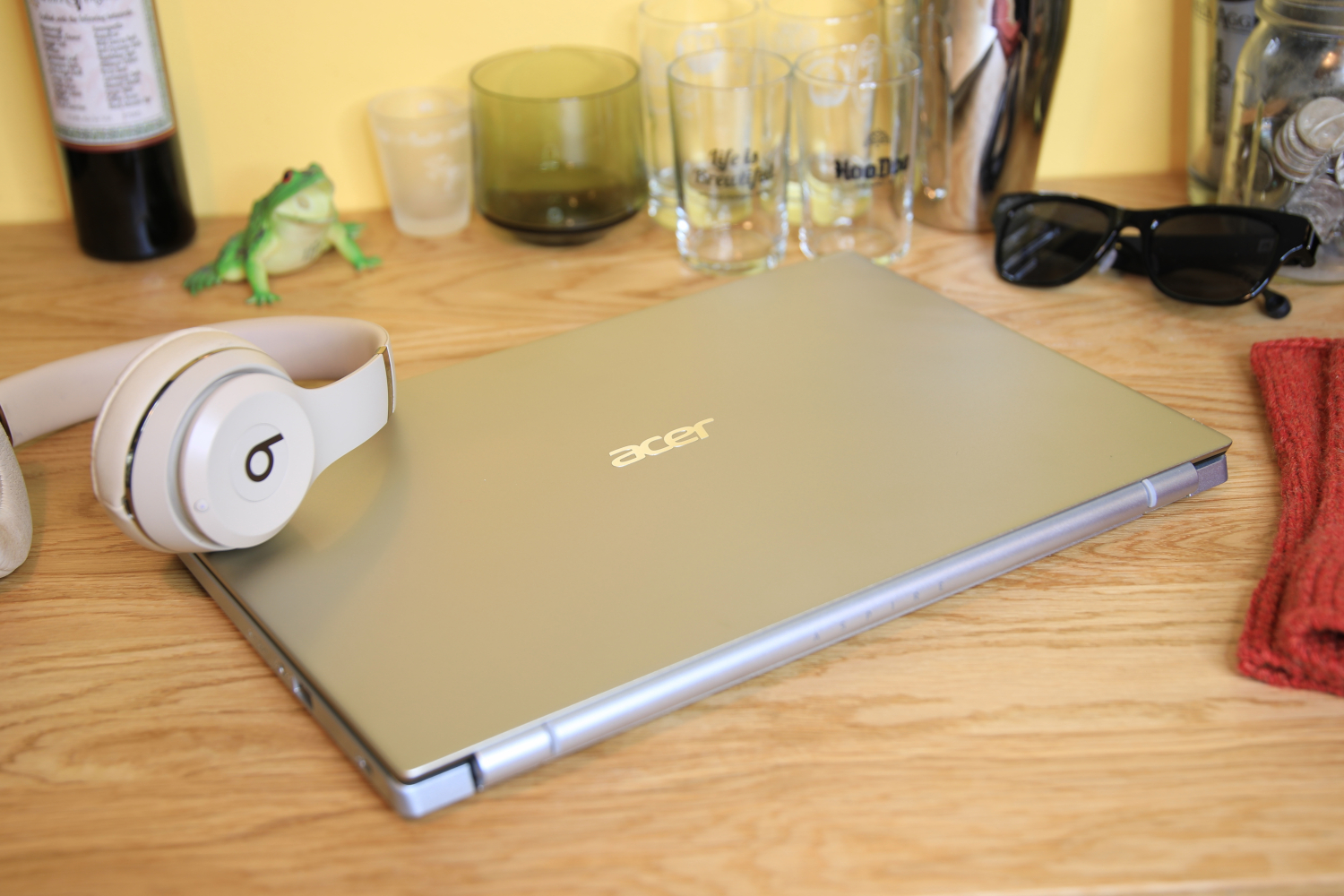
Pros
- Affordable price
- Rugged build
- Great keyboard
- Good selection of ports
Cons
- Subpar webcam
- Annoying bloatware comes pre-installed
- Touchpad is a little hard to use
With its affordable price point, decent performance, and robust build, the Acer Aspire 5 is a good budget option for most people. While the color scheme is a little boring to look at, the build is surprisingly rugged. Our tester was surprised by its “solid, durable feel.” The keyboard is nice, too. It has a spacious layout, which is perfect for longer typing sessions. Performance is fast enough for general use tasks like writing emails and browsing the web, but that’s about it. If you’re shopping around for a solid everyday laptop that won’t break the bank, the Aspire 5 is definitely worth a look.
Read our full
Acer Aspire 5 review
Acer Chromebook Spin 713 – Best Chromebook
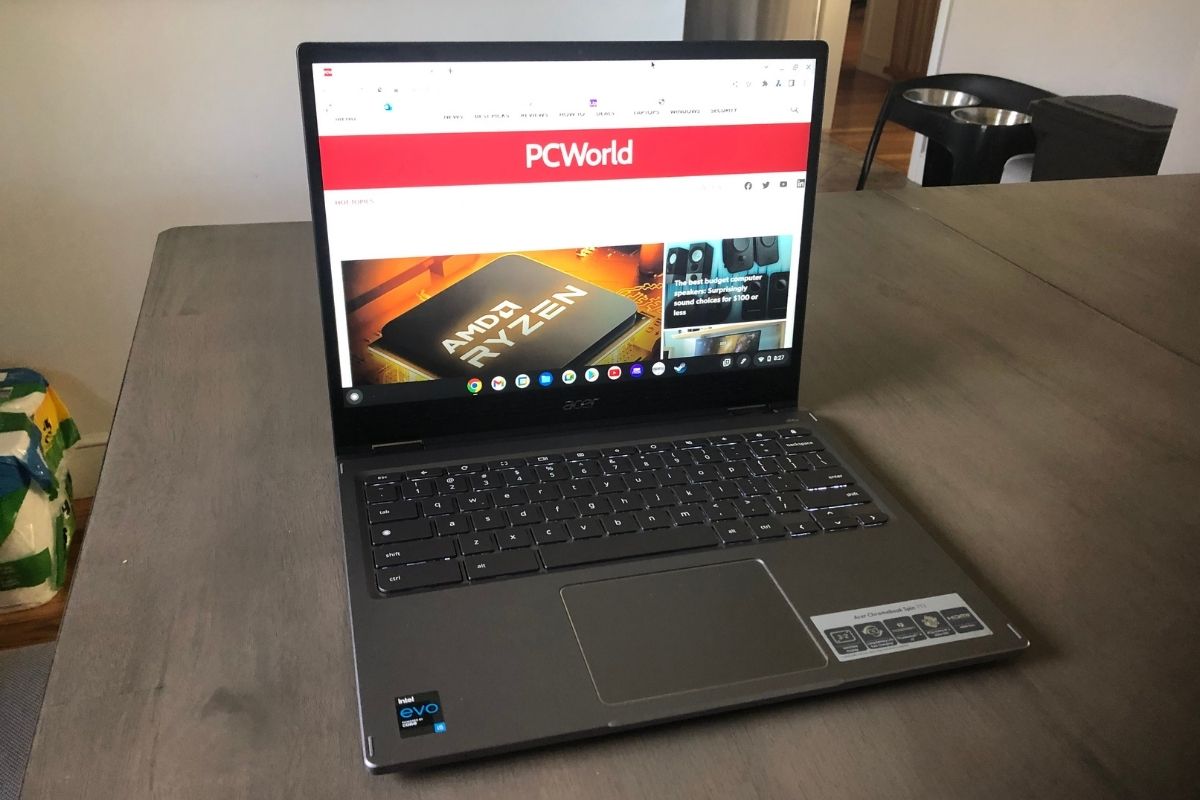
Pros
- Strong performance
- Good build quality
- Nice selection of ports
- Beautiful display
- Solid battery life
Cons
- No privacy shutter on the webcam
- Boring design
- Fan noise is a bit loud
If you’re looking for a great convertible laptop, the Acer Chromebook Spin 713 will surely fit the bill. You can either prop it up like a tent or fold the screen all the way back and use it like a tablet. We were also impressed with its vibrant display, all-day battery life, and diverse selection of ports. The design is a little utilitarian, but this is the kind of machine that favors function over aesthetics. The build is robust and there was hardly any flex in the keyboard tray. There are a couple of downsides like the loud fan noise and the lack of a physical privacy shutter on the webcam, but these issues are relatively minor. Overall, the Spin 713 is a solid convertible laptop that performs well.
Dell XPS 17 9710 – Best content creation laptop
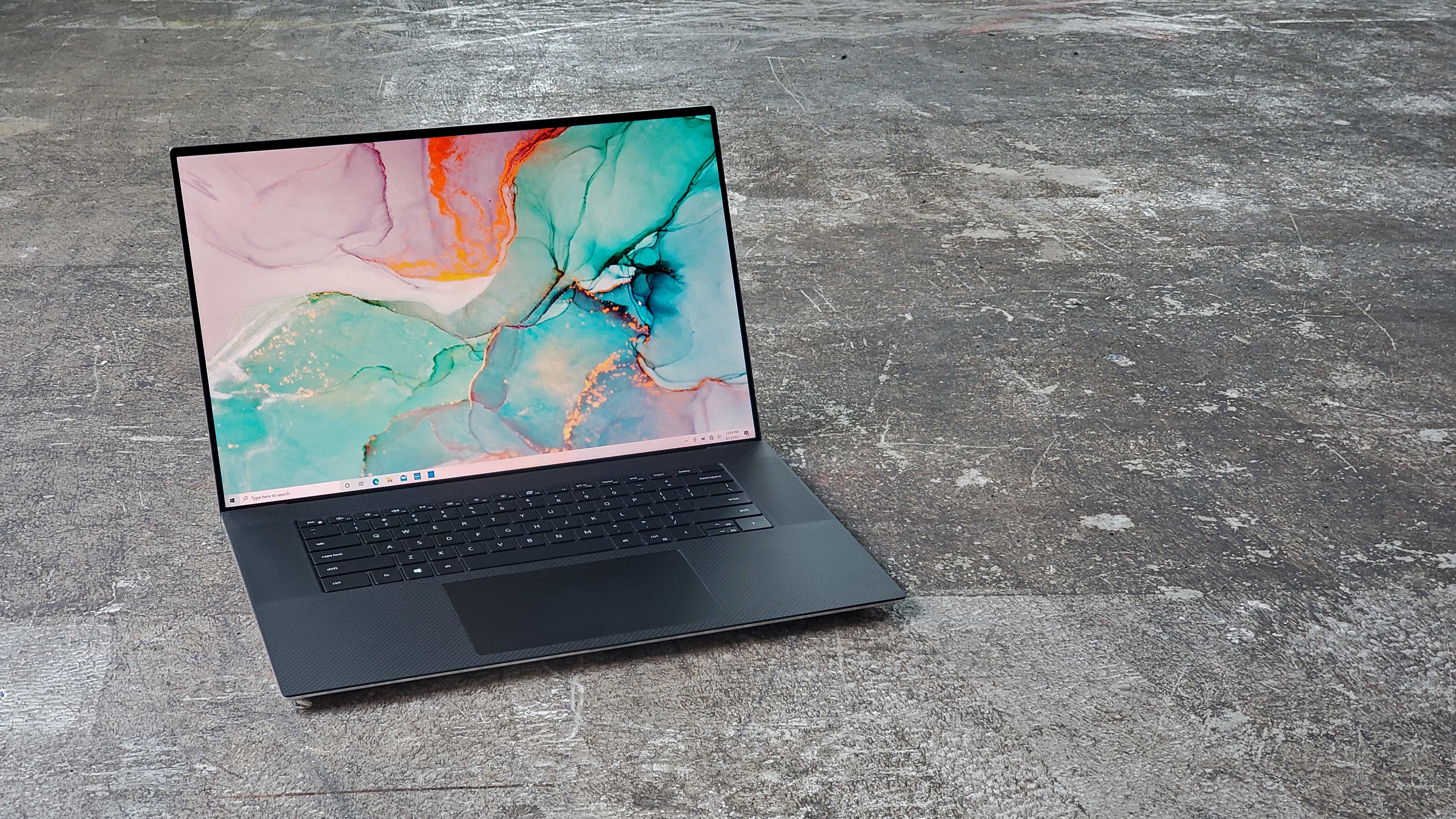
Pros
- Huge 17-inch screen in a relatively compact laptop
- Intel’s newest 11th gen CPU and Nvidia RTX graphics
Cons
- No USB-A port and no Gigabit Ethernet
- Hybrid charging likely sacrifices a little performance
Dell’s updated XPS 17 boasts a huge 17-inch screen, 11th-gen Intel CPU, and GeForce RTX 3060 GPU. By packing as much screen 4K, 10-bit color real estate into such a compact laptop, and loading the notebook with every feature professionals ask for (hello SD card reader and abundant Thunderbolt 4 ports), the XPS 17 is the poster child for what a content creation workhorse laptop is. If you’re looking for something different, the Asus VivoBook Pro 16X OLED is a great alternative due to its gorgeous OLED display and unique dial controls. It also happens to be our runner-up pick for the best content creation laptop. Check out the entry below.
Read our full
Dell XPS 17 9710 review
Asus VivoBook Pro 16X OLED – Best content creation laptop (runner up)
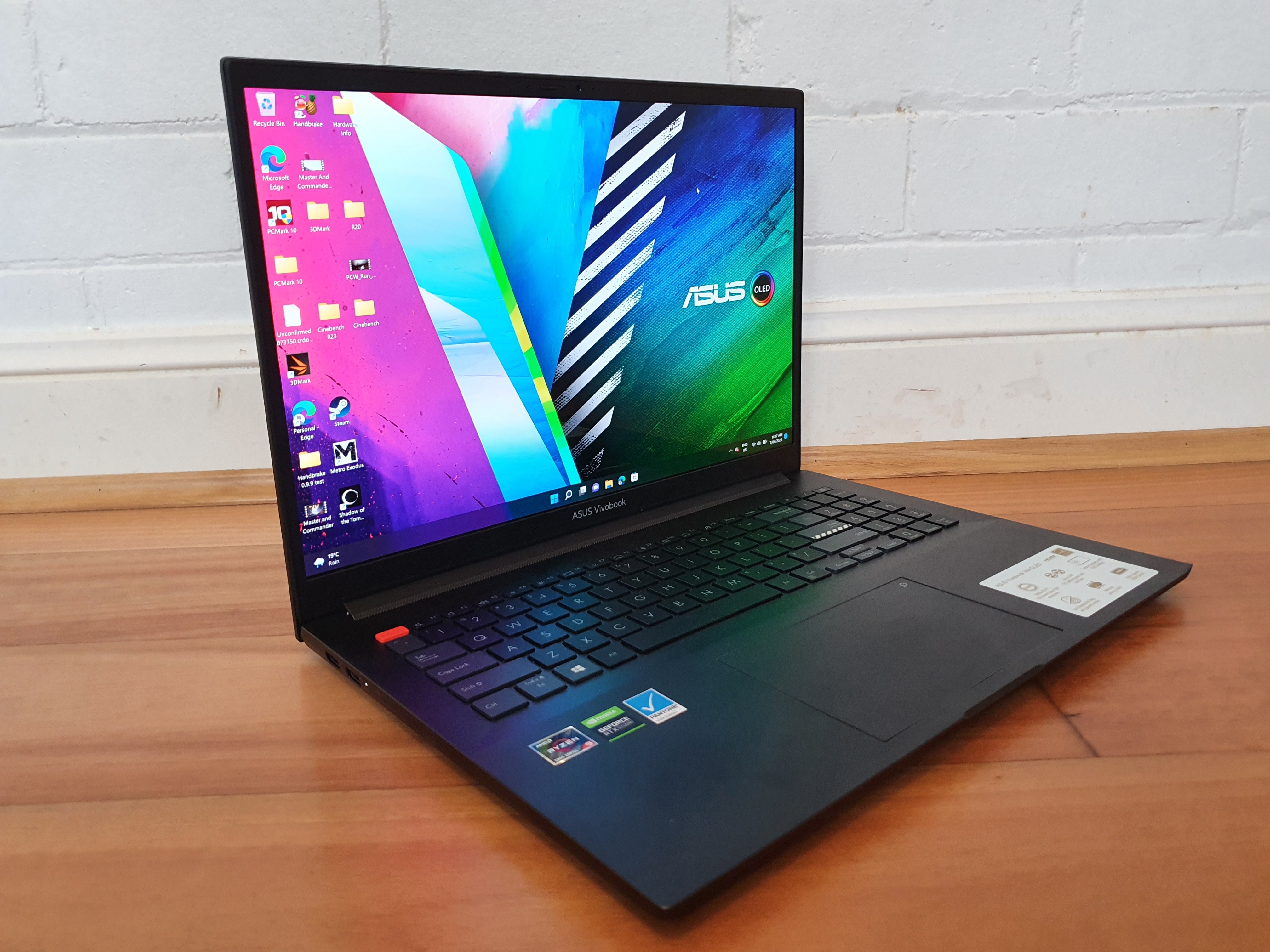
Pros
- Beautiful 4K OLED display
- Long battery life
- Useful DialPad tool
Cons
- Design lacks flair
- Lackluster webcam
The Asus VivoBook Pro 16X OLED is another great option for content creators. It has a use DialPad feature, a 4K OLED display, and a micro SD card slot—all coveted specifications for image and video editing. Compared to the Dell XPS 17 9710 (our top pick for content creators), this laptop has a weaker 3050 Ti GPU. That said, the Ryzen 5900HX CPU has more cores. Therefore, the Asus may be a better option for those with CPU-intensive workloads. It’s also lightweight and compact, and it’s packing a whopping 1TB PCIe NVMe M.2 SSD. Overall, this is another great choice for creators.
Read our full
Asus VivoBook Pro 16X OLED review
Acer Swift 3 – Best for students
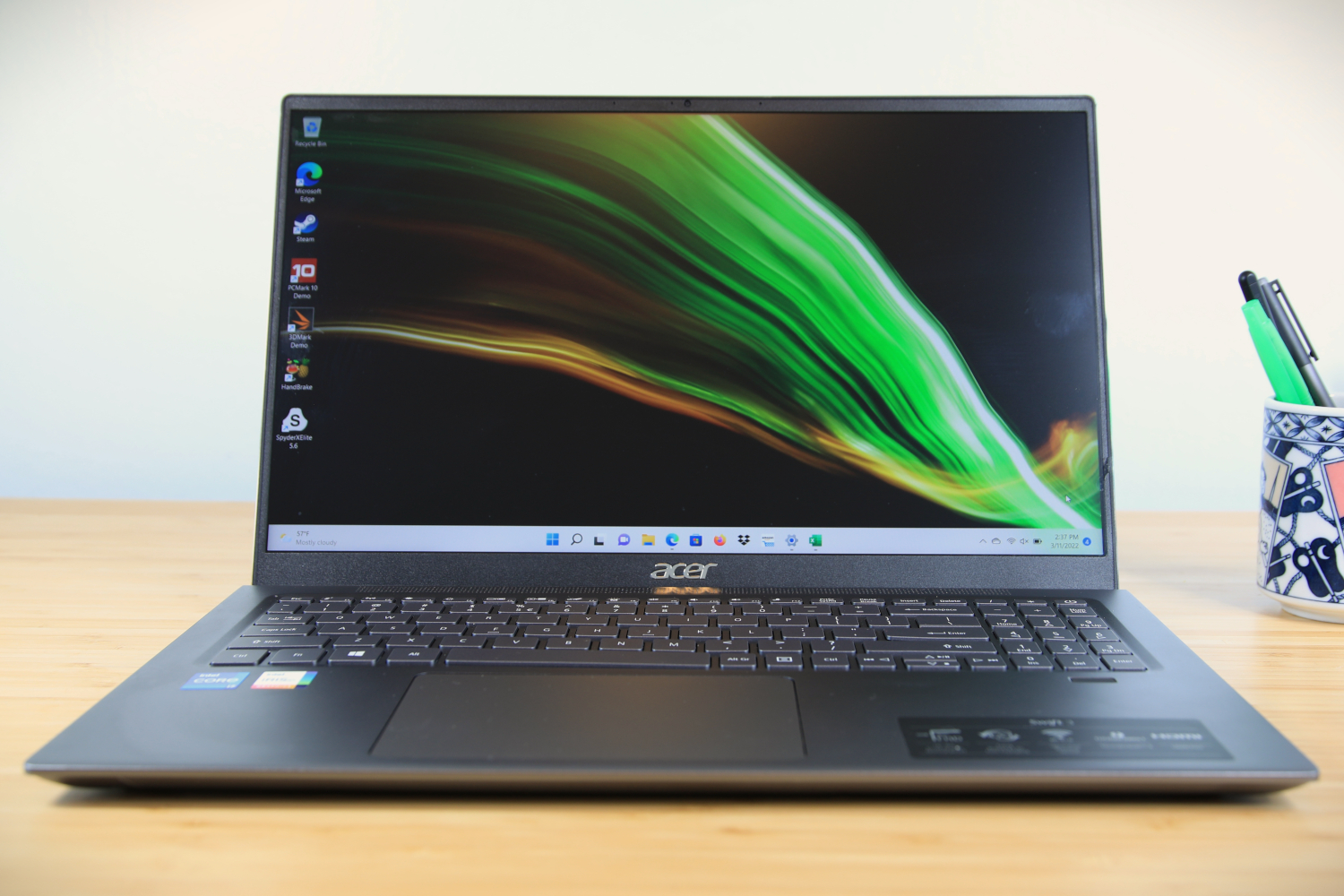
Pros
- Solid chassis and build quality
- Large, attractive 16-inch 1080p screen
- Enjoyable keyboard and touchpad
- USB-C with charging and DisplayPort
Cons
- Webcam, microphone, and speakers don’t impress
- Intel processor falls behind AMD alternatives
- Disappointing battery life
- Lots of bloatware
If you’re looking for a big screen on a modest budget, the Acer Swift 3 is a fantastic option. It features an attractive 16-inch 1080p display, a solid chassis, and an enjoyable keyboard and touchpad. However, battery life is subpar, so you’ll want to keep the charger on hand. This is unfortunate, as the Swift 3’s slim profile makes it a good laptop for travel. If you don’t mind the battery life, this is a great laptop for watching movies and streaming shows.
Read our full
Acer Swift 3 SF316-51 review
Microsoft Surface Pro 8 – Best tablet
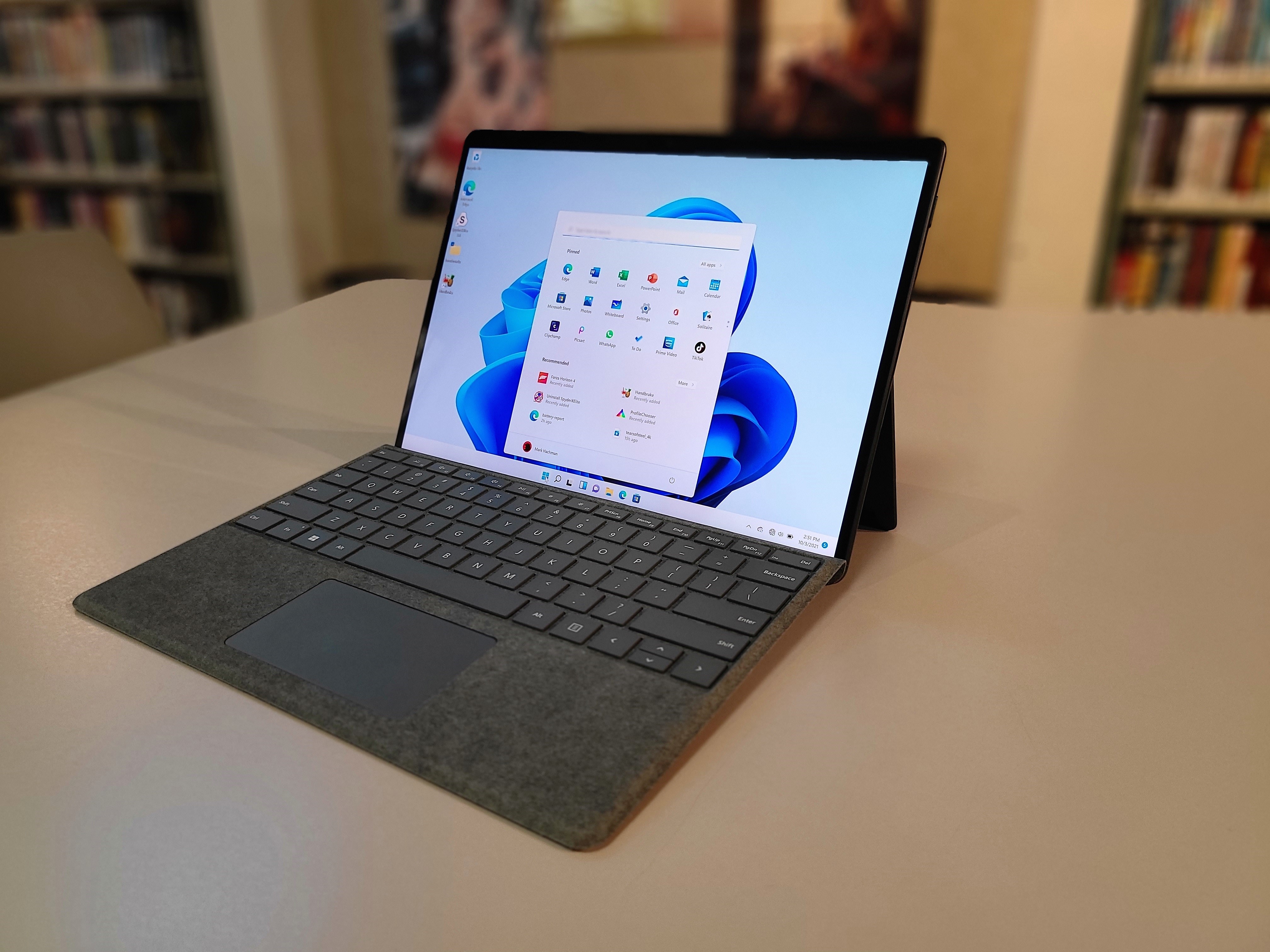
Pros
- Superior screen: larger, higher-res, higher refresh rate
- Inking is a pleasure
- Good audio, with louder speakers
- New optional Type Cover integrates pen well
Cons
- Webcam might need some tweaking
- Pen and keyboard still cost extra
- Still pricey
Microsoft’s Surface tablets were already atop our list of best 2-in-1 laptops, but Microsoft reworked the Surface Pro 8 in numerous ways by adding a larger, higher-resolution, faster screen, a pair of Thunderbolt ports that replace the legacy Surface Connector, and a new inking experience, among other features.
While this generation of the Surface Pro tablet forgoes an always-connected LTE option as well as the choice of a cheap Core i3, performance still soared to the top of the heap. Benefits like how the increased display refresh rate improves inking are subtle improvements that matter, too. It’s the most dramatic revamp of a Surface in years and it’s all for the better.
Read our full
Surface Pro 8 review
Asus ROG Zephyrus G14 (2022) – Best mid-range gaming laptop
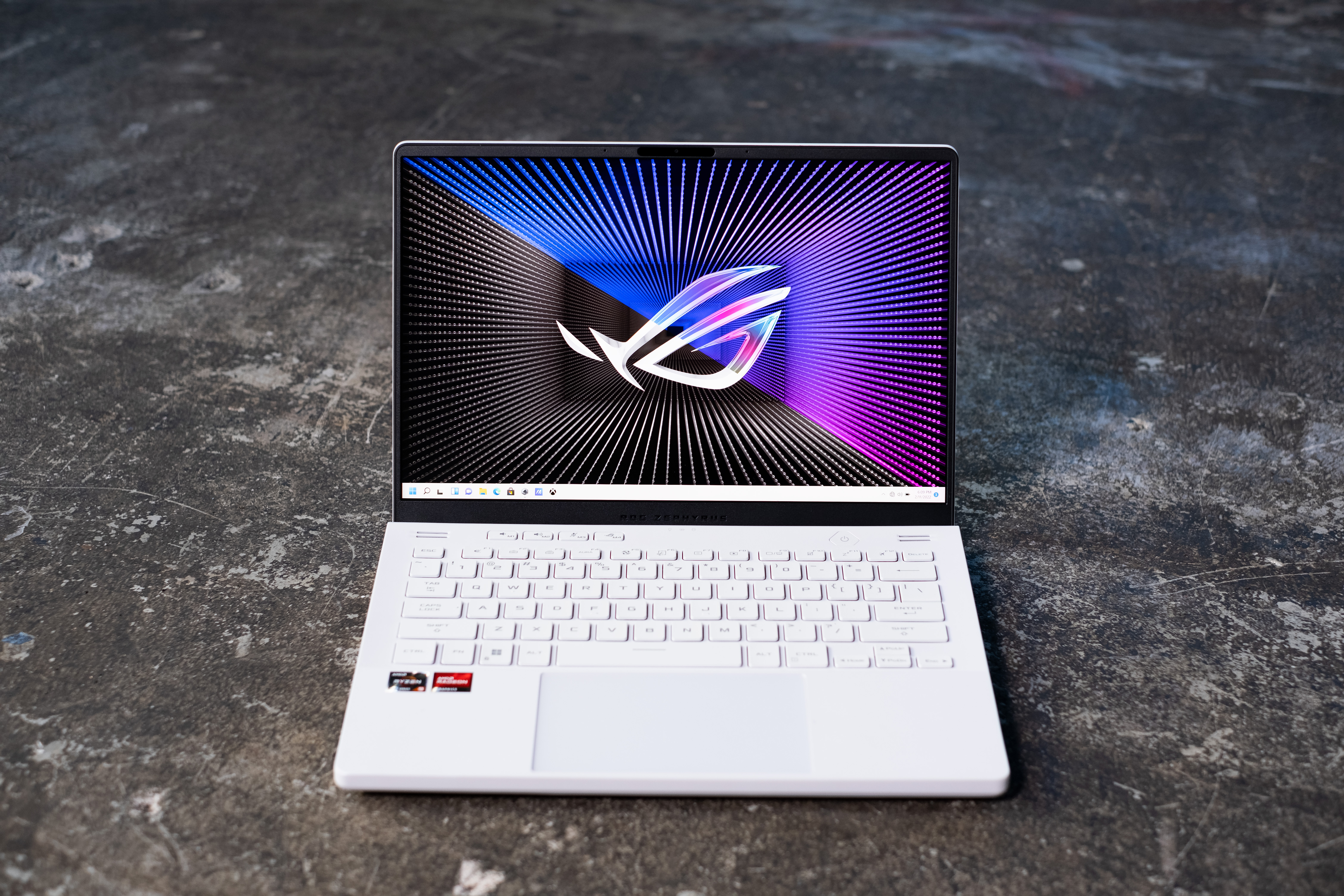
Pros
- Powerful CPU and GPU performance in a very compact design
- AniMe Matrix screams unique
- It has a webcam
Cons
- Half permanent RAM
- Keyboard backlighting is subpar
The ROG Zephyrus G14 is both lightweight and powerful—a very rare combination. It weighs just a little over three pounds, which makes it a capable traveling laptop. Between the AMD Ryzen 9 6900HS processor and AMD Radeon RX6800S GPU, you can expect strong performance as well. The only weakness is the keyboard. It feels a little mushy and the backlighting is rather unimpressive. That said, if you’re in the market for a portable laptop that delivers zippy performance, the Zephyrus G14 is a great pick.
Read our full
ROG Zephyrus G14 (2022) review
Samsung Galaxy Book Pro 360 5G – Best coffee shop laptop

Pros
- Fantastic 16-hour battery life
- Ultra thin, light and svelte
- Excellent 1080p OLED display and Dolby audio
- Solid value, though a premium price
Cons
- Shallow keyboard
- A ton of preloaded apps, many from Samsung
- No 4K display option
The Samsung Galaxy Book Pro 360 5G offers a gorgeous OLED screen, superb battery life, and an excellent inking experience. It also has a 360-degree hinge, which means you can fold it up like a tent or swing the display around and use it like a tablet. It’s very versatile, which may appeal to students or business professionals. In our review, our tester described it as “an excellent coffee shop PC.” The only drawback is the slow SSD.
Read our full
Samsung Galaxy Book Pro 360 5G review
HP Chromebook x2 11 da0023dx – Best folio-style Chromebook

Pros
- Gorgeous 2K touchscreen
- Solid performance
- Excellent battery life
- Robust design
Cons
- Trackpad is too sensitive at times
- Light on ports
Ah, folio-style laptops. While some may find them cumbersome to deal with, our reviewer really liked this one. The HP Chromebook x2 11 is one of the best 2-in-1 laptops you can buy. The tablet’s aluminum chassis feels rugged and like it’ll last quite a while. The detachable keyboard took some getting used to, but ended up being fine for long typing sessions. The rear plate, which transforms into a kickstand that holds up the tablet, connects to the back of the tablet via magnets. The reviewer found the connection to be both clean and strong. As for the performance, it’s about what you’d expect out of a Chromebook. It’s zippy enough for everyday tasks like browsing the web and so on.
Read our full
HP Chromebook x2 11 review
Lenovo Yoga 9i 14 (2022) – Best convertible
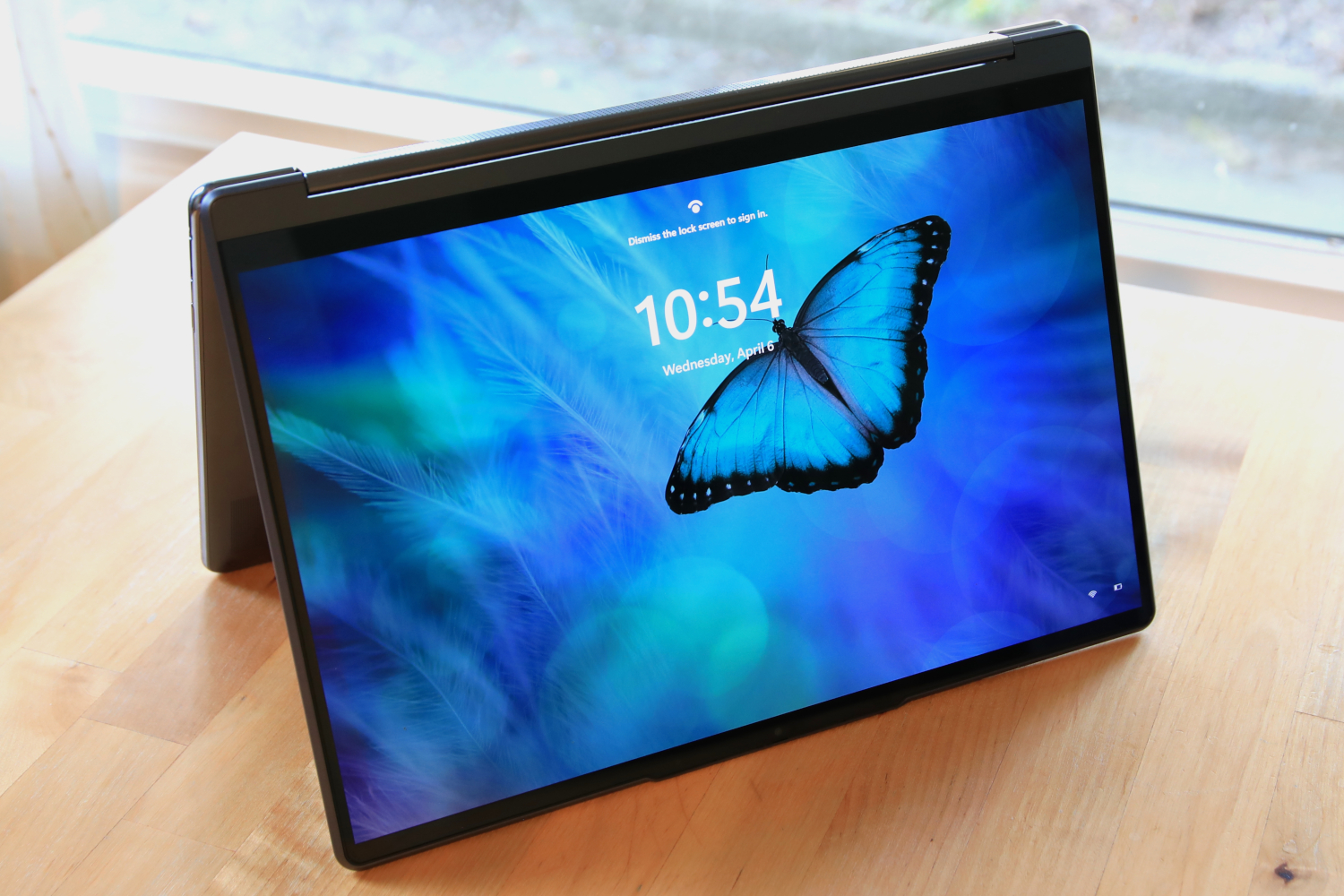
Pros
- Sturdy and sleek all-metal chassis
- Long battery life
- Impressive audio output
- Comfortable keyboard
Cons
- 16:9 screen feels cramped
- Included stylus is too skinny
- Undersized touchpad
- Limited ports all on left side
The Lenovo Yoga 9i is a fantastic convertible. It has an attractive design, a dazzling OLED display, and great sound quality. Plus, the 12th-gen Intel processor really boosts performance. According to our tester, the processor “packs four performance cores and eight efficiency cores.” That’s quite a bit of power. The 74 watt-hour battery is quite large for a compact 2-in-1 as well. When we put the laptop through our battery test, it died in about 12 hours. You can expect this laptop to last through the work day. There’s a couple of minor nitpicks to be aware of, though. The 19:9 aspect ratio makes the screen feel a bit squished and the touchpad is smaller than we like. If you can live with those small drawbacks, the Yoga 9i is well worth considering.
Read our full
Lenovo Yoga 9i 14 (2022) review
How we tested
The PCWorld team puts each and every Windows laptop through a series of benchmarks that test GPU and CPU performance, battery life, and so on. The idea is to push the laptop to its limits and then compare it against others we’ve tested. Chromebooks, on the other hand, go through a series of web-based tests. It wouldn’t be fair or possible to run the same kinds of tests on a Chromebook, as they’re Chrome OS-based machines. Below, you’ll find a breakdown of each test and the reasons why we run them.
Windows laptops
- PCMark 10: PCMark 10 is how we determine how well the laptop handles lighter tasks like web browsing, word processing, spreadsheets, and so on.
- HandBrake: HandBrake is more intensive than PCMark 10. It basically measures how long a laptop’s CPU takes to encode a beefy 30GB file.
- Cinebench: Cinebench is a brief stress test of the CPU cores. It does this by rendering a 2D scene over a short period of time.
- 3DMark: 3DMark checks if 3D performance remains consistent over time by running graphic-intensive clips.
- Video rundown test: To gauge battery life, we loop a 4K video using Windows 10’s Movies & TV app until the laptop dies.
Chromebooks
- CrXPRT 2: The CrXPRT 2 benchmark tests a Chromebook’s battery life.
- Speedometer 2.0: This test determines a Chromebook’s web browser performance. It simulates this by adding, completing, and removing a to-do list.
- Basemark Web 3.0: This benchmark gauges how well a Chromebook can handle web-based applications.
- Kraken 1.1: Kraken 1.1 is a JavaScript performance benchmark.
- Jetstream 2: Jetstream 2 is a combination of WebAssembly and JavaScript benchmarks. This is a way to gauge how well a Chromebook runs advanced workloads.
Laptop FAQ
Ah, here we are at the billion dollar question. Do you spring for a basic Chromebook or go for a Windows laptop with more features? Well, it really depends on your personal lifestyle and what you plan on using your laptop for. For example, Chromebooks are a great low cost option for those who just want the basics. I use a Chromebook as my primary work laptop, as it has everything I need for both editing and writing. If you travel a bunch for work, it’s probably a good idea to invest in a laptop with solid battery life. If you’re still unsure, don’t sweat it. I’ve put together a list of quick tips below.
What type of laptop should I get?
The first question you should ask yourself is what kind of laptop you’re looking for. There’s traditional clamshells, 2-in-1’s, Chromebooks, and much more. The displays on convertible laptops (aka 2-in-1’s), for example, can swing around 360 degrees. This allows you to use the laptop like a tablet. They can also be propped up like a tent for viewing movies or participating in video calls. Chromebooks, on the other hand, exclusively run Google’s web-focused Chrome OS and are generally used for everyday tasks. All you need is a Gmail account and boom, you’re in. There are pros and cons to each of them. Chromebooks are affordable and generally have good battery life whereas convertibles are normally lightweight and portable.
How much processing power will I need?
If it’s CPU power you’re looking for, look for processors with higher numerical names. A Core i7 is more suited to gaming and more intense work than everyday tasks. Intel processors are available in Core i3, Core i5, Core i7, and Core i9. The higher the number, the more powerful the CPU. If you don’t need a ton of power, Intel Core i5 processors are your best bet, as they offer good performance at a decent price. Basic office and web work gets along just fine on a Core i3. As for AMD options, the Ryzen 3 is good for basic productivity and web browsing, while Ryzen 5 chips rival Intel’s Core i5 as solid all-arounders. If you need more power, the Ryzen 7 chip is well suited for content creation like video editing. Finally, if you’re dealing with 4K video, spring for a Ryzen 9.
What’s the difference between discrete graphics and integrated graphics?
You’ll want a discrete graphics card for hardcore gaming or editing videos. It’s separate from the processor, so you can expect higher performance out of it. Integrated graphics, on the other hand, are attached to the CPU and uses less power as a result. This is perfectly fine for everyday tasks, especially if you’re not doing anything that’s graphics-intensive.
What about memory?
8GB of RAM is zippy enough for general use. If you’ve got a gaming laptop, 16GB of RAM is the way to go, and content creators will want even more.
How big should my display be?
If you’re a video editor or someone who does a lot of multimedia work, you’ll want a display that’s anywhere from 15- to 17-inches. The sweet spot is really anywhere from 13- to 14-inches, though. The bigger the display, the heavier your laptop is going to be. A 13- or 14-inch display is the best in terms of portability and value.
How long should my laptop last on a single charge?
If you plan on taking your laptop anywhere with you, aim for something that can last 10 to 12 hours on a single charge. That’s more than a full work day, so it should theoretically get you through long flights or a day of classes. Obviously, more is always better. Just know that the bigger the battery, the heavier the laptop.
How much should I spend?
The price really depends on your budget. If you’re strapped for cash (been there, trust me), go for a Chromebook or an entry-level business laptop. These laptops are good choices for students or young professionals. If you can afford to spend more, the versatility of a 2-in-1 laptop is really worth it.
What about connectivity?
A wide array of ports is always a plus in my book, as it eliminates the need for an adapter. I’d recommend a laptop that has both USB-C and USB-A. An HDMI port is good, too. This is especially useful for when you want to hook up to an external monitor.



